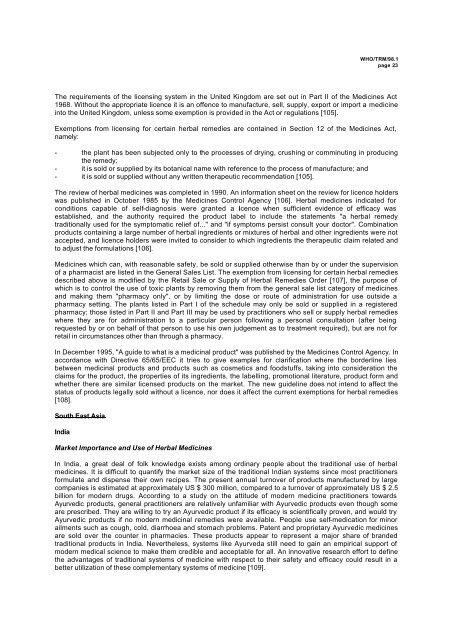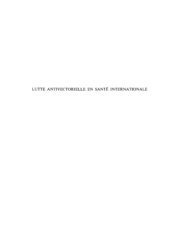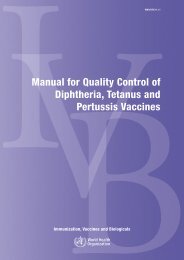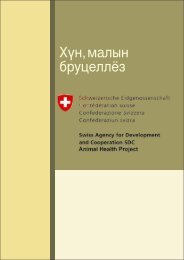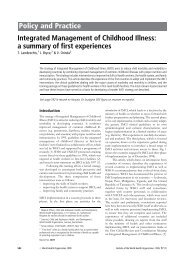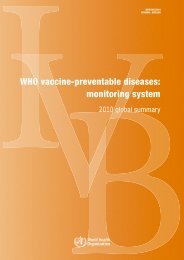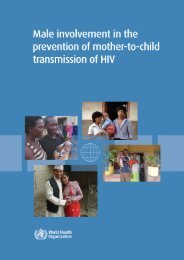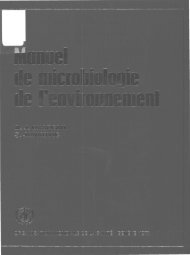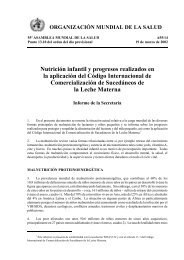Regulatory Situation of Herbal Medicines A worldwide Review
Regulatory Situation of Herbal Medicines A worldwide Review
Regulatory Situation of Herbal Medicines A worldwide Review
You also want an ePaper? Increase the reach of your titles
YUMPU automatically turns print PDFs into web optimized ePapers that Google loves.
WHO/TRM/98.1page 23The requirements <strong>of</strong> the licensing system in the United Kingdom are set out in Part II <strong>of</strong> the <strong>Medicines</strong> Act1968. Without the appropriate licence it is an <strong>of</strong>fence to manufacture, sell, supply, export or import a medicineinto the United Kingdom, unless some exemption is provided in the Act or regulations [105].Exemptions from licensing for certain herbal remedies are contained in Section 12 <strong>of</strong> the <strong>Medicines</strong> Act,namely:- the plant has been subjected only to the processes <strong>of</strong> drying, crushing or comminuting in producingthe remedy;- it is sold or supplied by its botanical name with reference to the process <strong>of</strong> manufacture; and- it is sold or supplied without any written therapeutic recommendation [105].The review <strong>of</strong> herbal medicines was completed in 1990. An information sheet on the review for licence holderswas published in October 1985 by the <strong>Medicines</strong> Control Agency [106]. <strong>Herbal</strong> medicines indicated forconditions capable <strong>of</strong> self-diagnosis were granted a licence when sufficient evidence <strong>of</strong> efficacy wasestablished, and the authority required the product label to include the statements "a herbal remedytraditionally used for the symptomatic relief <strong>of</strong>..." and "if symptoms persist consult your doctor". Combinationproducts containing a large number <strong>of</strong> herbal ingredients or mixtures <strong>of</strong> herbal and other ingredients were notaccepted, and licence holders were invited to consider to which ingredients the therapeutic claim related andto adjust the formulations [106].<strong>Medicines</strong> which can, with reasonable safety, be sold or supplied otherwise than by or under the supervision<strong>of</strong> a pharmacist are listed in the General Sales List. The exemption from licensing for certain herbal remediesdescribed above is modified by the Retail Sale or Supply <strong>of</strong> <strong>Herbal</strong> Remedies Order [107], the purpose <strong>of</strong>which is to control the use <strong>of</strong> toxic plants by removing them from the general sale list category <strong>of</strong> medicinesand making them "pharmacy only", or by limiting the dose or route <strong>of</strong> administration for use outside apharmacy setting. The plants listed in Part I <strong>of</strong> the schedule may only be sold or supplied in a registeredpharmacy; those listed in Part II and Part III may be used by practitioners who sell or supply herbal remedieswhere they are for administration to a particular person following a personal consultation (after beingrequested by or on behalf <strong>of</strong> that person to use his own judgement as to treatment required), but are not forretail in circumstances other than through a pharmacy.In December 1995, "A guide to what is a medicinal product" was published by the <strong>Medicines</strong> Control Agency. Inaccordance with Directive 65/65/EEC it tries to give examples for clarification where the borderline liesbetween medicinal products and products such as cosmetics and foodstuffs, taking into consideration theclaims for the product, the properties <strong>of</strong> its ingredients, the labelling, promotional literature, product form andwhether there are similar licensed products on the market. The new guideline does not intend to affect thestatus <strong>of</strong> products legally sold without a licence, nor does it affect the current exemptions for herbal remedies[108].South East AsiaIndiaMarket Importance and Use <strong>of</strong> <strong>Herbal</strong> <strong>Medicines</strong>In India, a great deal <strong>of</strong> folk knowledge exists among ordinary people about the traditional use <strong>of</strong> herbalmedicines. It is difficult to quantify the market size <strong>of</strong> the traditional Indian systems since most practitionersformulate and dispense their own recipes. The present annual turnover <strong>of</strong> products manufactured by largecompanies is estimated at approximately US $ 300 million, compared to a turnover <strong>of</strong> approximately US $ 2.5billion for modern drugs. According to a study on the attitude <strong>of</strong> modern medicine practitioners towardsAyurvedic products, general practitioners are relatively unfamiliar with Ayurvedic products even though someare prescribed. They are willing to try an Ayurvedic product if its efficacy is scientifically proven, and would tryAyurvedic products if no modern medicinal remedies were available. People use self-medication for minorailments such as cough, cold, diarrhoea and stomach problems. Patent and proprietary Ayurvedic medicinesare sold over the counter in pharmacies. These products appear to represent a major share <strong>of</strong> brandedtraditional products in India. Nevertheless, systems like Ayurveda still need to gain an empirical support <strong>of</strong>modern medical science to make them credible and acceptable for all. An innovative research effort to definethe advantages <strong>of</strong> traditional systems <strong>of</strong> medicine with respect to their safety and efficacy could result in abetter utilization <strong>of</strong> these complementary systems <strong>of</strong> medicine [109].


